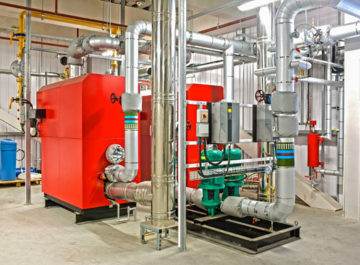In a typical ultraviolet (UV) disinfection system, water passes through a reactor vessel, where one or more UV lamp(s) irradiate the flowing water. Generally, the distribution of the UV dose is non-uniform within the reactor, with UV dosage decreasing as distance from the lamp(s) increases. The EET UV Water Purification System is designed so that all of the water receives sufficient UV dosage to achieve the desired effect on microorganisms.
The Rev-Flo System
The REV-FLO unit is configured such that both forward and reverse fluid flow is exposed to UV radiation, which effectively doubles the exposure to the UV lamps compared to commercially-available units. In addition, since the exiting flow passes through a high intensity region of the unit, low UVT waters are treated effectively, a feature that may make the REV-FLO design a niche application for the pharmaceutical industry. The expected nominal design flow range for initial applications of the REV-FLO system is 10 to 15 gallons per minute (gpm). The unit is scalable.



